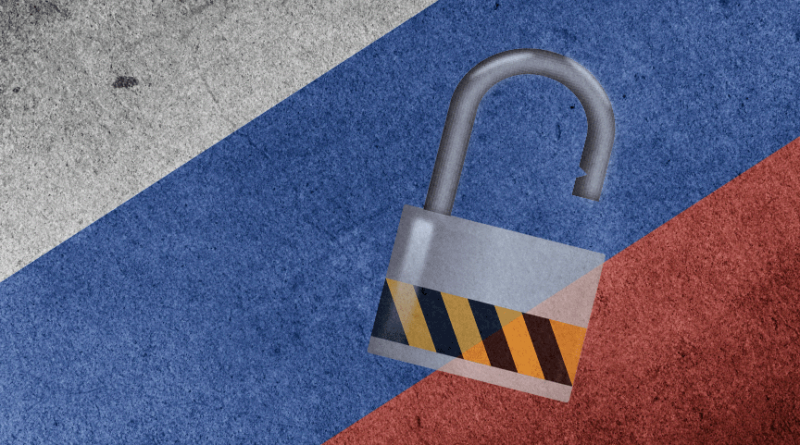Harvesting windfall profits from Russian assets
Armin Steinbach is a Non-Resident Fellow at Bruegel as well as Jean Monnet Professor of Law and Economics at HEC Paris and Research Affiliate at the Max Planck Institute for Research on Collective Goods in Bonn
After months of bickering over whether and how to confiscate Russian sovereign assets, G7 members on 14 June agreed to use future profits from frozen funds held by Euroclear in Belgium to prop up a loan for Ukraine of up to €50 billion1. That makes sense, as a full-blown confiscation policy would be plagued with legal pitfalls. Yet, the challenge still remains of crafting a syndicated loan backed by G7 members that strikes a fair deal on burden sharing.
Three issues must be dealt with. First, the European Union will be at the centre of confiscation efforts and as such will have more to lose than the United States. Fair burden-sharing therefore suggests that the US should take on a disproportionately high share of the syndicated loan’s repayment guarantee.
Second, the EU budget must provide surety against the risk that future revenue streams from windfall profits from frozen Russian assets – approximately €3 billion annually – turn out to be insufficient to repay the loan.
Third, the uncertainty created for G7 partners by sunset dates in EU asset-freezing decisions (and hence uncertainty over the appropriation of windfall profits) should be addressed by replacing such dates with review clauses. This will reduce the risk of unpredictable voting behaviour by certain EU members.
What belongs to whom?
In unpicking these issues, the first question is who owns the windfall profits from Russia’s assets, expected to amount to €3 billion annually (after Belgian corporate tax). One answer is that the profits are Euroclear property (differently from the principal assets owned by Russia), simply because revenue from reinvesting matured bonds does not accrue to Russia. Depositories like Euroclear usually transfer their customers’ cash balances out before the end of the day without any remuneration for the customers.
What makes this case unique however, is that the EU and Russia both deny that Euroclear is entitled to retain the profits. According to the EU, Euroclear “cannot expect to gain an undue and unintended economic benefit from” EU sanctions2 – a claim Russia would agree with.
The EU denies Euroclear’s entitlement to the profits based on the EU having the competence to impose sanctions on Russia, while Russia sees the windfall profits as unjustified enrichment following the maturing of Russian assets.
In pursuit of its claim, Russia could initiate proceedings under the Belgium-Russia bilateral investment treaty, possibly claiming the violation of fair and equitable treatment, or outright expropriation.
While such a lawsuit would likely fail because of the overriding public interest of sanctioning violations of international law, some legal insecurity remains on the entitlement to windfall profits.
EU vulnerability
On the delicate issue of burden-sharing among G7 members, it should be noted that about €191 billion ($205 billion) in Russian assets is held at Euroclear, while only $5 billion is held in the United States. This imbalance makes the skimming of windfall profits in the EU a much more likely target of Russian retaliation, as Russia has warned repeatedly3. Russia’s easiest riposte will be to confiscate assets held by European companies.
According to the Kyiv School of Economics4, European and US companies have pulled out approximately 40 percent of their assets in Russia since the full-scale war in Ukraine began. The rest decided to stay, but stopped operating or are still in the process of trying to sell their assets.
What remains in Russia are foreign assets worth $194 billion. Of this, $90 billion is owned by European companies, nearly three times more than the amount owned by US-headquartered companies ($32 billion). If Russia’s warnings of retaliation are serious, European companies could end up footing the bill for funding Ukraine.
With the EU facing greater risks of retaliation, the US should at least accept to take on the main burden in providing guarantees to underpin the Ukraine loan. This will be pivotal in crafting the syndicated loan.
It will have to be decided whether the syndicated loan will be repaid from the proceeds of a dedicated bond backed by future windfall profits as collateral. The disadvantage of this approach is that it will lead investors to ask for a high discount, making borrowing expensive.
A better option would be back-to-back lending by the G7, as is EU practice already in lending via Multilateral Financial Assistance to Ukraine. Whether G7 members provide their guarantees jointly, through a third-party institution or through bilateral loans to Ukraine is secondary.
In order to ‘Trump-proof’ the loan, it could be wise to first pay the loan to a multilateral institution, such as the World Bank, where it could then be sent onwards to Ukraine. This would prevent Trump from cancelling the US share to the loan5.
Most important is to agree on the design of a ‘sharing clause’ to underpin the syndicated loan agreement, and which will define the pro-rata exposure of G7 members in case windfall profits are not enough to repay the loan.
One initial proposal foresaw countries being liable in proportion to the amount of frozen Russian assets they hold6. These are hardly agreeable terms, as this would double the burden for the EU, which holds most Russian assets, and add to the retaliation risk. GDP-based pro-rata burden sharing is one natural benchmark for burden sharing. However, the EU’s greater exposure to Russian retaliation would justify greater risk exposure for the US.
Russia could initiate proceedings under the Belgium-Russia bilateral investment treaty, possibly claiming the violation of fair and equitable treatment, or outright expropriation
A role for the EU budget
Another fundamental point is that the burden-sharing architecture underpinning the loan must be balanced not only between the EU and the G7, but also between the EU and its member states. With the EU lacking taxing power, its capital market activity and credibility depend on financial contributions from its members. Any back-to-back lending channelled from the EU to Ukraine must therefore be guaranteed by the EU budget.
Current loans to Ukraine are guaranteed by the EU budget – an exceptional situation. However, this exception expires at the end of 2024 and requires a unanimous decision of EU governments if it is to be extended. As an alternative, individual EU countries might offer bilateral guarantees to back the loan.
While this would circumvent the issue of unanimity, it would invite free-riding, rendering it an unviable option. Any option outside the EU budget will almost certainly create new tensions among EU members related to fair burden sharing.
Sunset dates
Third, implementation of the agreed syndicated loan raises the question of how the EU can synchronise the long-term (20 years or more) loan to Ukraine with the annual accrual of windfall profits. The loan’s collateral will grow incrementally only as long as sanctions are in force, but Brussels sets expiry dates for EU sanctions.
Sanctions decisions typically expire every six months and are renewed by votes of EU governments in the Council of the EU. Renewal can become a regular practice, as shown by sanctions on Belarus, which have been in place for over 20 years.
However, G7 members of the Ukraine loan syndicate will regard this practice of short-termism nervously: repayment of the loan to Ukraine hangs on the thin thread of an ongoing political will to reap the windfall profits, giving obstructionist EU members opportunities to seek to bargain with their votes.
Yet, there is a solution to this quandary. The EU should separate the asset freeze from the remaining arsenal of sanctions on Russia. Instead of setting the usual six-month expiry date, the EU should incorporate a review clause tied to a specific objective – one that makes suspension of sanctions conditional on Russian compliance with international law and payment of damages to Ukraine.
Council of the EU (2018) Sanction Guidelines provide for review clauses as an alternative to expiry dates. As long as it is ensured that a review takes place, there is no obligation to use expiry dates. What matters – as the European Court of Justice in 2008 set out in the context of property freezes – is that sanctions maintain the character of “temporary precautionary measures”7. They must be revisited frequently in view of the objectives pursued.
In Russia’s case, the objectives for the review clause are easy to operationalise: for Russia to pull out of Ukraine and to pay damages. If the annual review finds that Russia has complied, the sanctions can be lifted. The political impact would be greater than in the current recurrent cycle of expiry and continuation of sanctions.
The implicit political signal sent to Russia by the review clause would be that causing new war damage reduces day-by-day the likelihood of asset release. More importantly, a review clause would create certainty for G7 members because the decision to repeal sanctions would need to be unanimous.
A situation might emerge in which hardliners want to maintain pressure on Russia and veto the lifting of sanctions, but this scenario is remote and would cause less political upheaval than threats to block sanctions by countries seeking to gain an advantage.
There is yet another alternative if renewal of sanctions would ultimately be blocked. If the EU fails to renew the seizure of the profits, the profits would continue accumulating with Euroclear. With Belgium exercising direct jurisdictional authority over Euroclear’s assets, Belgium could seize the windfall profits and pass them on to collateralise the loan – a solution that could circumvent the EU’s internal intricacies.
Endnotes
1. See The White House, ‘G7 Apulia Leaders’ Communiqué’, 14 June 2024.
2. See Council Decision (CFSP) 2024/1470 concerning restrictive measures in view of Russia’s actions destabilising the situation in Ukraine, 21 May 2024.
3. Guy Faulconbridge and Dmitry Antonov, ‘Kremlin says it has list of Western assets to be seized if Russian assets are confiscated’, Reuters, 29 December 2023.
4. See Kyiv School of Economics SelfSanctions/LeaveRussia project.
5. Hugo Dixon, ‘How to scale up the G7’s $50 bln Ukraine loan’, Reuters, 24 June 2024.
6. Gregorio Sorgi and Jakob Hanke Vela, ‘US-EU spat derails push for $50B Ukraine loan using Russian assets’, Politico, 11 June 2024.
7. Court of Justice of the EU, Joined Cases C-402/05 P and C-415/05, Yassin Abdullah Kadi and Al Barakaat International Foundation v Council of the European Union and Commission of the European Communities.
References
Council of the EU (2018) Guidelines on implementation and evaluation of restrictive measures (sanctions) in the framework of the EU Common Foreign and Security Policy.
This article was originally published on Bruegel.




